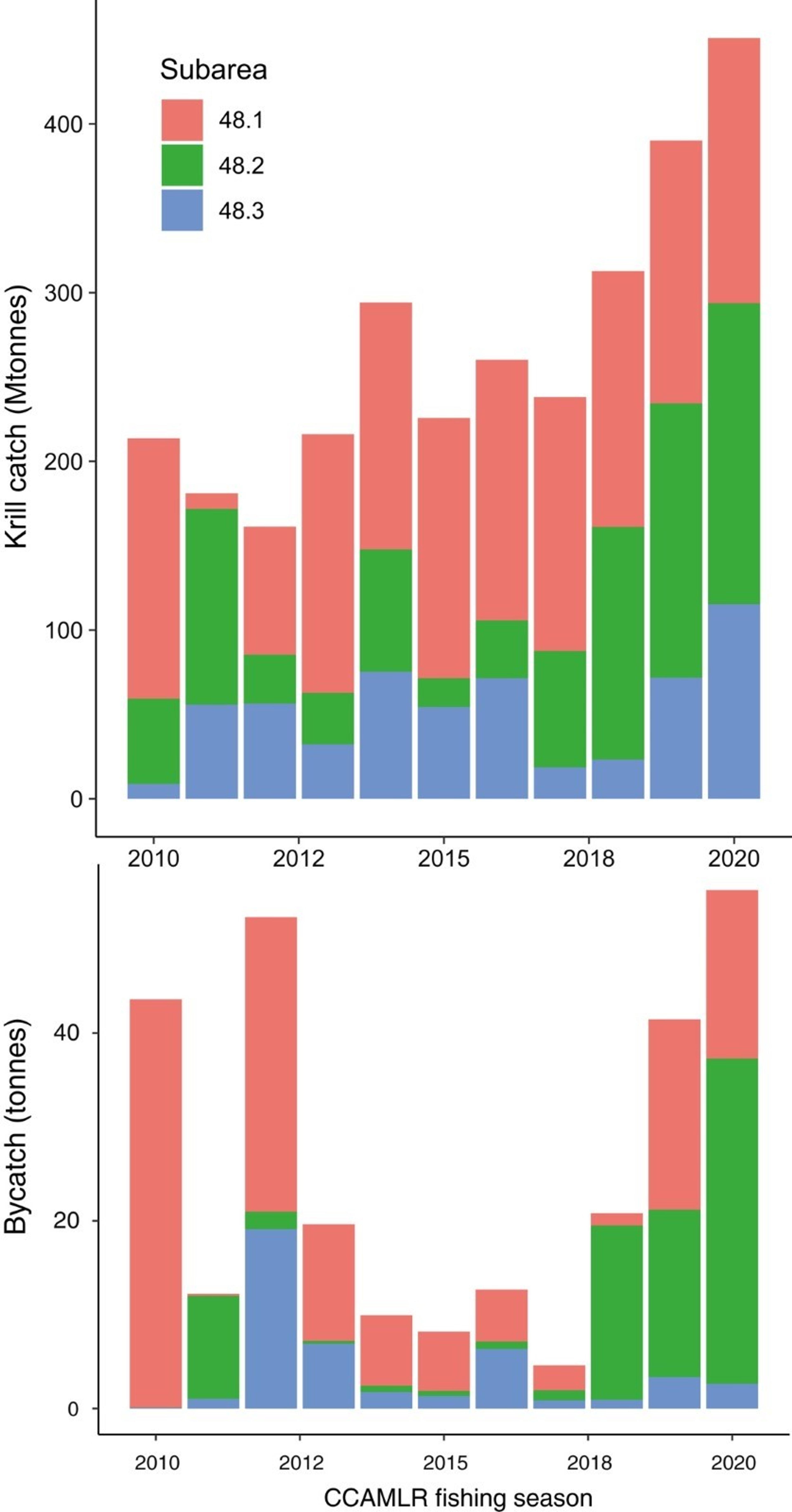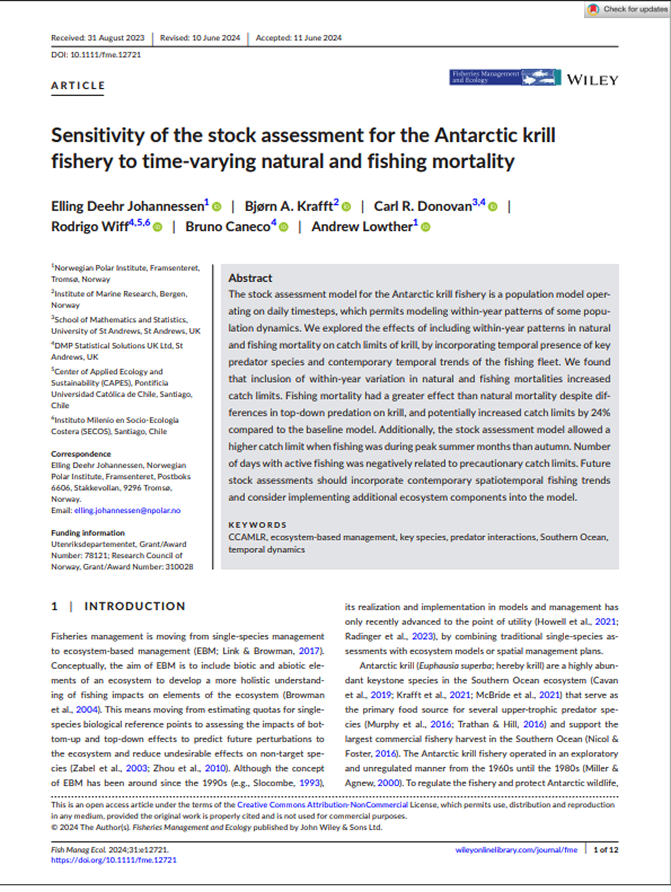Antarctic ecosystem
Fisheries management
Biomass
Krill (Euphausia superba)
Bycatch in the Antarctic krill (Euphausia superba) trawl fishery
Summary
This research examined bycatch (unintended catch of non-target species) in the Antarctic krill fishery in the Southwest Atlantic sector from 2010 to 2020. Scientific observers monitored approximately 20% of fishing operations during this period.Bycatch remained consistently low at 0.1-0.3% of total catch in most years, except 2010 when it reached 2.2%. Fish species dominated the bycatch composition, followed by tunicates and other crustaceans across all fishing areas.During this decade, total Antarctic krill harvest nearly doubled from 200,000 to 450,000 tonnes, with the greatest increases occurring in the final three years (2018-2020).Compared to other global trawl fisheries with typical bycatch rates of 10-55%, the Antarctic krill fishery demonstrates low levels of unintended catch. This suggests current fishing methods have minimal impact on non-target marine species, supporting the sustainability of operations targeting this keystone Antarctic species.

1
Total Antarctic krill catch and bycatch in the Southwest Atlantic sector during 2010-2020. The top panel shows krill catch nearly doubled from 200,000 to 450,000 tonnes, with the greatest increases occurring in the final three years. The bottom panel demonstrates that bycatch remained consistently low (typically under 40 tonnes annually) despite the substantial increase in fishing activity, highlighting the relatively clean nature of the krill fishery compared to other global trawl operations. Key Findings
1
Bycatch in the Antarctic krill fishery is significantly lower (0.1-0.3%, except 2010 at 2.2%) than other global trawl fisheries (10-55%) 2
Fish dominated the bycatch composition, followed by tunicates and other crustaceans 3
Observer coverage averaged 20% across the study period, providing reliable monitoring 4
Different fishing gear types showed varying bycatch amounts, with continuous pumping trawlers producing lower average bycatch (6.3 tonnes) than conventional trawlers (19.2 tonnes) 5
Maintaining high observer coverage is important for detecting impacts from a warming climate and for moving back into historical fishing grounds 

